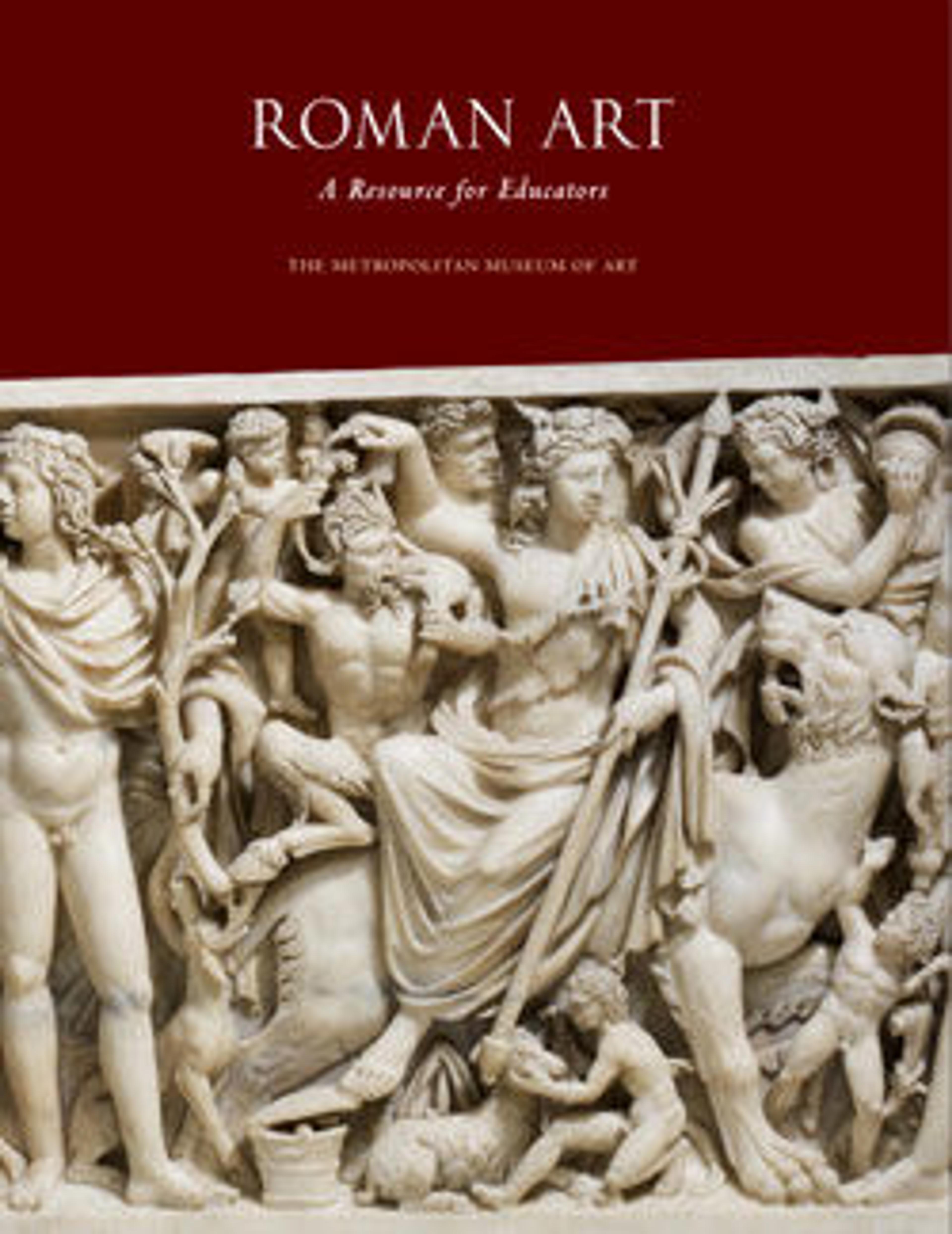Marble funerary altar of Cominia Tyche
This woman's name is known from the inscription below the portrait which reads: "To the spirits of the dead. To the most saintly Cominia Tyche, his most chaste and loving wife, [from] Lucius Annius Festus. [She] died at the age of twenty-seven years, eleven months, twenty-eight days. Also for himself and for his descendants." This cippus, or grave altar, is known to have been in a house near the Roman forum in the sixteenth century. It entered the collection of Cardinal Francesco Barberini during the seventeenth century. The jug and patera (libation dish) on the monument's sides allude to the common practice in antiquity of pouring liquids as an act of commemoration, in this instance recalling the modern tradition of placing flowers at the graveside.
Apart from the arresting portrait with Cominia's massive hairdo of a late Flavian or early Trajanic style, the funerary altar is remarkable for the details that the inscriptions provides about her age and character, and sense of loss expressed by her husband. In giving her exact age at death in terms of months and days as well as years, it implies that her date of birth had been recorded and was known to her grieving husband.
Apart from the arresting portrait with Cominia's massive hairdo of a late Flavian or early Trajanic style, the funerary altar is remarkable for the details that the inscriptions provides about her age and character, and sense of loss expressed by her husband. In giving her exact age at death in terms of months and days as well as years, it implies that her date of birth had been recorded and was known to her grieving husband.
Artwork Details
- Title: Marble funerary altar of Cominia Tyche
- Period: Flavian or Trajanic
- Date: ca. 90–100 CE
- Culture: Roman
- Medium: Marble
- Dimensions: H. 40 in. (101.6 cm)
- Classification: Stone Sculpture
- Credit Line: Gift of Philip Hofer, 1938
- Object Number: 38.27
- Curatorial Department: Greek and Roman Art
Audio
1205. Marble funerary altar of Cominia Tyche
0:00
0:00
We're sorry, the transcript for this audio track is not available at this time. Please email info@metmuseum.org to request a transcript for this track.
More Artwork
Research Resources
The Met provides unparalleled resources for research and welcomes an international community of students and scholars. The Met's Open Access API is where creators and researchers can connect to the The Met collection. Open Access data and public domain images are available for unrestricted commercial and noncommercial use without permission or fee.
To request images under copyright and other restrictions, please use this Image Request form.
Feedback
We continue to research and examine historical and cultural context for objects in The Met collection. If you have comments or questions about this object record, please contact us using the form below. The Museum looks forward to receiving your comments.
